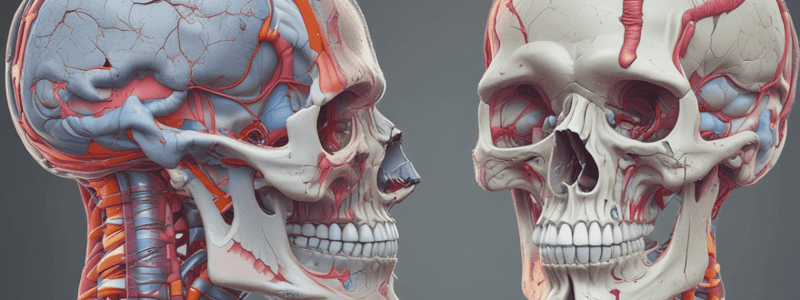Podcast
Questions and Answers
Which of the following is a common indication for an intravenous pyelogram (IVP)?
Which of the following is a common indication for an intravenous pyelogram (IVP)?
- Acute urinary tract infection
- Urodynamic studies for incontinence
- Vesicoureteric reflux
- Suspected urinary tract pathology (correct)
What is a contraindication to the use of intravenous contrast media for an IVP?
What is a contraindication to the use of intravenous contrast media for an IVP?
- Loin pain
- Impaired renal function, particularly in patients with diabetes (correct)
- Suspected urinary tract pathology
- Recurrent urinary tract infection
Which of the following is not a recommended patient preparation step for an IVP?
Which of the following is not a recommended patient preparation step for an IVP?
- No food for 5 hours prior to the examination
- Dehydration to improve image quality (correct)
- Establishing venous access
- Routine administration of bowel preparation
What is the purpose of the preliminary abdominal radiograph taken before an IVP?
What is the purpose of the preliminary abdominal radiograph taken before an IVP?
Which of the following is a common indication for performing an IVP?
Which of the following is a common indication for performing an IVP?
What is a contraindication to the use of intravenous contrast media for an IVP?
What is a contraindication to the use of intravenous contrast media for an IVP?
Which of the following is NOT an indication for ascending urethrography?
Which of the following is NOT an indication for ascending urethrography?
What is the purpose of obtaining lateral views during an ascending urethrogram?
What is the purpose of obtaining lateral views during an ascending urethrogram?
What is the purpose of obtaining oblique views during an ascending urethrogram?
What is the purpose of obtaining oblique views during an ascending urethrogram?
What is the purpose of obtaining stress views during an ascending urethrogram?
What is the purpose of obtaining stress views during an ascending urethrogram?
What is the rationale for administering antibiotics to patients undergoing ascending urethrography?
What is the rationale for administering antibiotics to patients undergoing ascending urethrography?
Which of the following is a potential complication of ascending urethrography?
Which of the following is a potential complication of ascending urethrography?
Which of the following is NOT a contraindication for ascending urethrography?
Which of the following is NOT a contraindication for ascending urethrography?
What is the purpose of inflating the balloon of the catheter with water during ascending urethrography?
What is the purpose of inflating the balloon of the catheter with water during ascending urethrography?
Which of the following is NOT a step in the technique of ascending urethrography?
Which of the following is NOT a step in the technique of ascending urethrography?
Which of the following is an indication for ascending urethrography?
Which of the following is an indication for ascending urethrography?
What is the purpose of obtaining steep oblique films during ascending urethrography?
What is the purpose of obtaining steep oblique films during ascending urethrography?
Which of the following is a contraindication for ascending urethrography?
Which of the following is a contraindication for ascending urethrography?
Flashcards are hidden until you start studying




